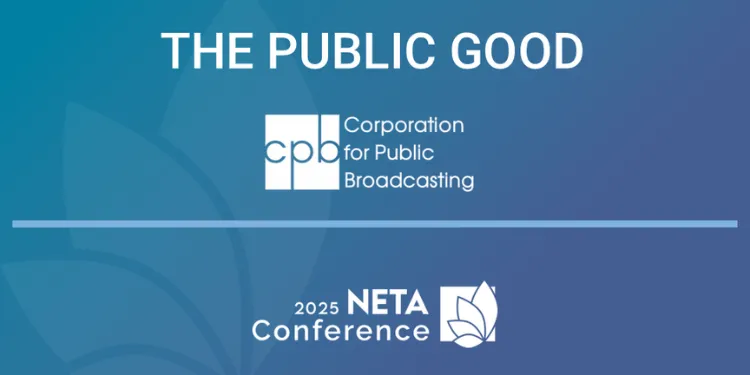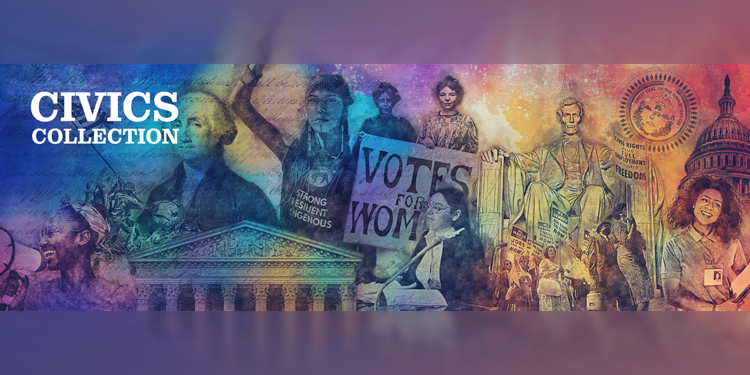September 17, 2025
At a pivotal moment for both public media and the nation, members of the Corporation for Public Broadcasting’s (CPB) Education team joined the National Educational Telecommunications Association (NETA) for a powerful panel discussion at NETA’s virtual conference on September 15, 2025.
Opening the session, CPB President and CEO Patricia Harrison honored nearly six decades of public media and its commitment to education, civic engagement, and community service. She reminded attendees that public media was created by a bipartisan Congress to serve the American people with free, high-quality content that educates, informs, and inspires. She presented a video highlighting public media’s impact since the passage of the Public Broadcasting Act of 1967, which created CPB.
Public Media Impact, by Blue Land LLC
While acknowledging that CPB is winding down, Harrison stressed the importance of carrying the work forward to the virtual audience of more than 675 public media professionals.
“The future of public media will depend on our shared commitment to the values that have guided us for nearly six decades,” she said. “It is up to all of you—this remarkable public media family—to carry it forward. To continue telling America’s story. To continue being a trusted source in a complex, polarized world. I know you can do it because America needs you.”
After Harrison’s remarks, CPB Executive Vice President, External Affairs, Chief of Staff and Corporate Secretary Debra Sanchez, who led CPB’s Education department for nearly 18 years, moderated a panel discussion featuring members of CPB’s education team: Michael Fragale, vice president and general manager of education strategy and content; Sarah Bean, VP of education content and innovation; and Pam Johnson, former executive director of Ready To Learn. Together, they reflected on the past, present, and future of public media’s educational mission.
Johnson, who began her career at WNED, now Buffalo Toronto Public Media, recalled how the station collaborated with numerous partners to address a serious literacy problem in Buffalo with a CPB-funded project that became the much beloved national series “Reading Rainbow.”
“At every turn, CPB was helping us stretch, grow our capacity, work together in modeling and scaling ideas together,” Johnson said. “Talk about the purpose of the Public Broadcasting Act – growing our educational services and finding and addressing new needs. CPB was helping us do all that.”
The panel also discussed findings from the 2024 National Education Survey of Public Television Stations, the latest in a series of CPB surveys designed to assess the scope and impact of stations’ educational services. The survey was designed by Kea Anderson, CPB’s former director of research and evaluation. Reflecting on the results, Bean emphasized the survey’s message of systemwide strength in education. “There is a lot of expertise in this system, and there’s a big opportunity for stations to support one another in their work,” she said.
Fragale highlighted another encouraging trend from the survey: 60% of the stations reported engaging a new funder for their educational work in the past year. “Before the loss of federal funding, we saw a renewed interest from funders and community leaders in stations’ education work,” he said. “That momentum is something stations can draw on in this changed funding environment.”
Sanchez discussed the essential role of partnerships in public media’s educational efforts. “From libraries and schools to state Departments of Education and other state agencies, these partnerships have been essential to public media’s service,” she said. “They will be even more vital moving forward, especially as the education community works to address learning gaps for students.”
The session concluded with reflections on memories, milestones, and hopes for the future. Across their remarks, the panelists emphasized the importance of collaboration, the strength of community partnerships, and the promise of the rising generation of public media leaders ready to carry the mission forward.
Sanchez closed the conversation with a forward-looking charge to the field, encouraging stations to keep building, keep imagining, and keep connecting. She reminded all in attendance that “people need public media more today than ever before.”




